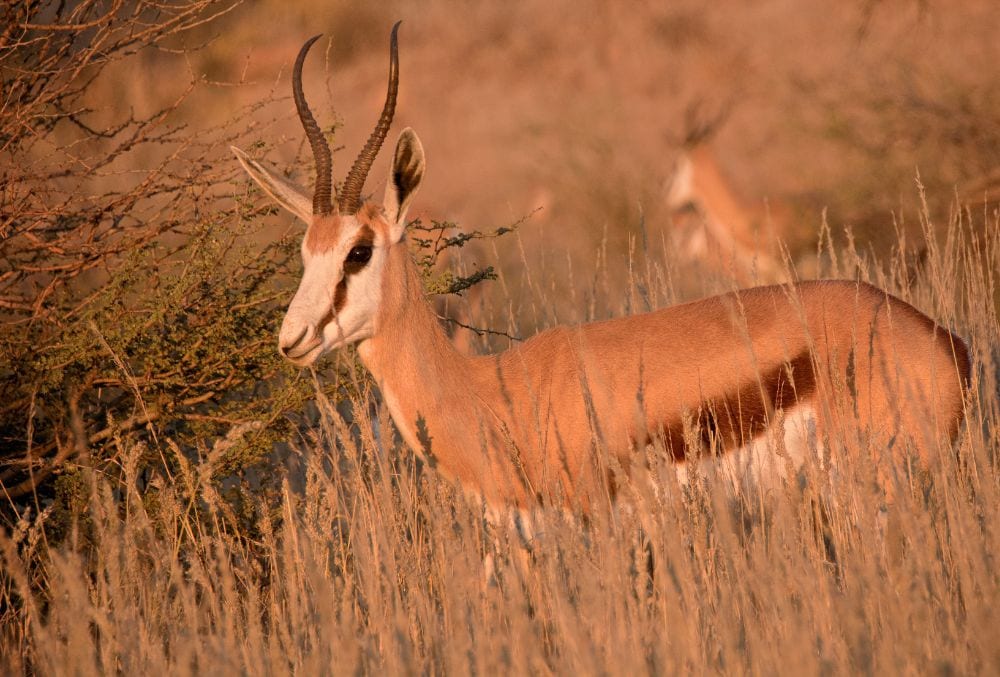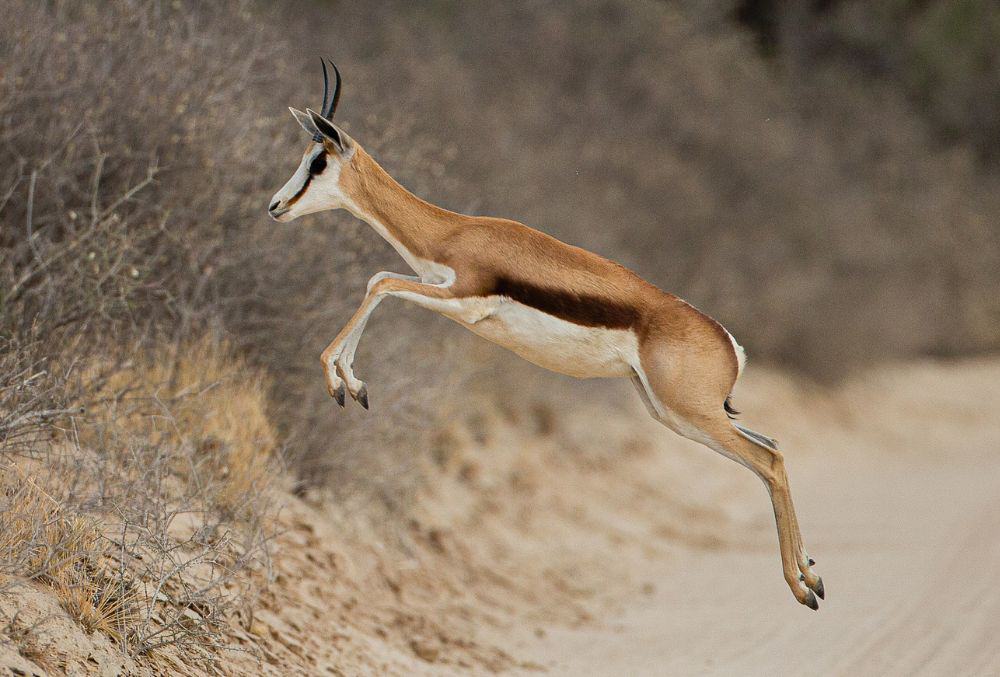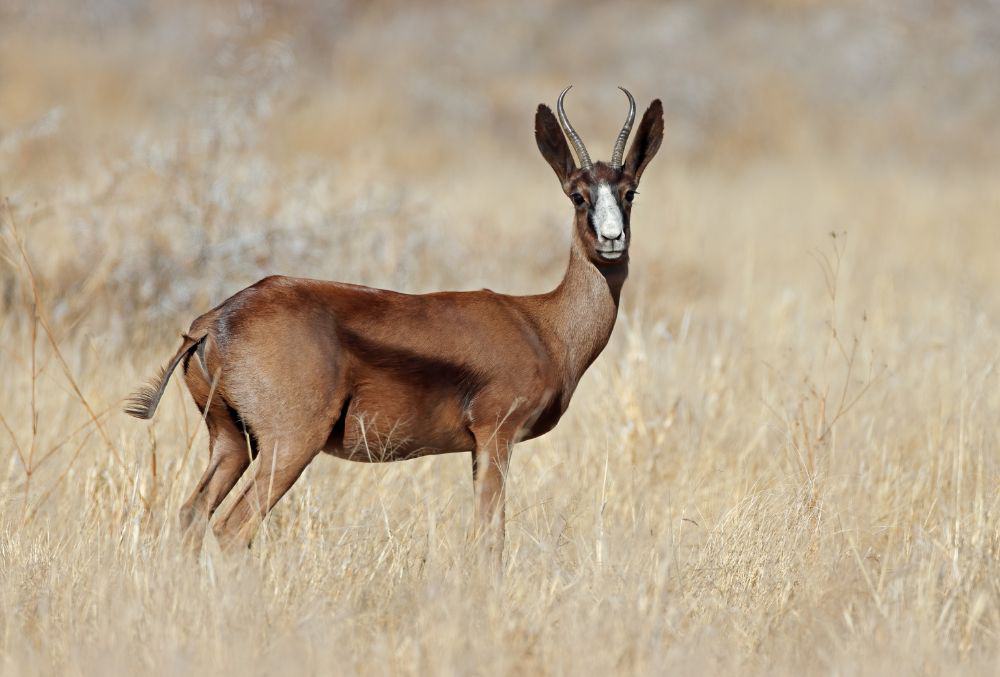Nestled in the windswept plains of the Karoo, a region known for its stark beauty and diverse wildlife, Thamo Telele’s farm is home to a rare spectacle that has captured the curiosity of biologists and nature enthusiasts alike: a black springbok. This unique creature, displaying an intense, dark coat that contrasts sharply with the typical sandy color of its species, offers a fascinating glimpse into the phenomenon of melanism in the wild.

Understanding Melanism
Melanism is a genetic mutation that causes an overproduction of melanin, the pigment responsible for dark coloration in the skin, hair, and eyes of animals. In contrast to albinism, where the absence of melanin results in white coloring and pink eyes, melanism results in a much darker, sometimes black appearance. This condition is observed in various species, including leopards, jaguars, and even squirrels, making it a widespread but still poorly understood genetic trait.
In the animal kingdom, melanism can be both a blessing and a curse. Darker individuals may have advantages in certain environments; for example, increased camouflage at night can help predators hunt or help animals avoid predation. However, the darker coloration can also lead to increased heat absorption, which might be a disadvantage in warmer climates.
The Black Springbok of Thamo Telele’s Farm
Thamo Telele, a farmer with a deep respect for nature and conservation, first noticed the black springbok in his herd several years ago. Initially a single, striking figure among a sea of gold, this springbok now leads a small group of similarly pigmented individuals, suggesting a genetic trait that has successfully passed down through generations.
Biologists who have visited the farm hypothesize that the black coloration in these springboks could be due to a form of melanism. This rare trait not only makes them a subject of scientific interest but also turns them into local celebrities in the conservation community. Researchers are particularly interested in studying how melanism affects their behavior and survival compared to their typically colored counterparts.

Genetic Implications and Conservation
The presence of melanistic animals like the black springbok on Telele’s farm presents a unique opportunity to study the genetic underpinnings of color variation in the wild. DNA analysis can reveal whether the melanism observed is due to the same genetic mutations seen in other melanistic animals. This research can contribute to a broader understanding of genetic diversity and adaptation in response to environmental factors.
Conservationists are also keenly interested in the implications of melanism for the survival of species. In some cases, melanistic individuals may be better suited to certain environments, potentially leading to a shift in population dynamics. On the other hand, if melanistic animals become too conspicuous or suffer from health issues related to their coloration, their presence could signify a vulnerability within their populations.
Local Impact and Ecotourism
The discovery of the black springbok has also had a significant impact on local tourism. Thamo Telele’s farm has become a destination for wildlife photographers and nature enthusiasts eager to catch a glimpse of these rare animals. This increase in ecotourism has helped boost local economies and has raised awareness about wildlife conservation.
Telele himself has embraced this role, working closely with conservationists to ensure that his farm remains a safe haven for the springboks. He has implemented measures to protect the animals from poaching and to maintain the natural environment in which they thrive.
The Bigger Picture
The black springbok of Thamo Telele’s farm is more than just a curiosity; it is a reminder of the complexity of nature and the importance of conservation. As we continue to explore the genetic mysteries behind melanism, we also learn more about how species adapt to their environments and how we can better protect them.

In a world where biodiversity is increasingly threatened by human activity, the story of the black springbok is a testament to the resilience of nature. It also serves as a call to action for conservationists, researchers, and the public to support efforts that help preserve the natural world in all its diverse forms.
Through continued research and conservation efforts, we can hope to unravel more about this mysterious genetic trait and its role in the survival and evolution of species. The black springbok of Thamo Telele’s farm not only enriches our understanding of genetic diversity but also highlights the beauty and wonder of the natural world, encouraging a deeper respect and commitment to protecting it.
